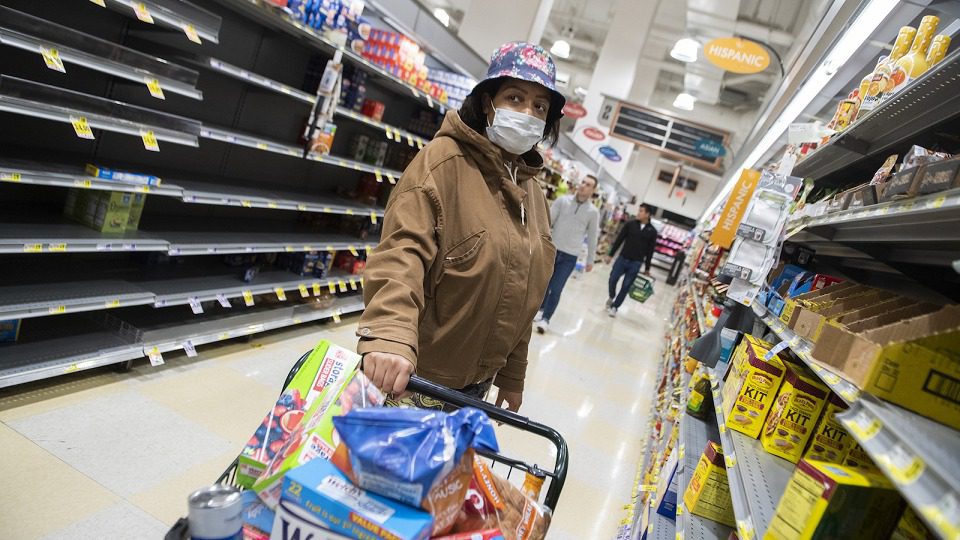Although many parts of the country are emerging from COVID-19 shutdowns, government and health officials anticipate that localized outbreaks could continue to impact retail operations in specific geographic locations going forward.
During the pandemic, consumers have adopted new habits that affect where and how often they will shop as restrictions ease. In grocery, for example, consumers shopped at fewer physical stores and bought more during each trip during the shutdown, according to FMI’s tracking of COVID-19 grocery shopping trends. Consumers also did more online purchasing, and although it’s too soon to know how much of that spending will come back to physical stores in the coming months, some experts believe there will be a permanent shift in favor of e-Commerce.
All these changes in demand patterns are forcing retailers to take a more localized, granular approach to inventory management. However, many systems are not optimized for these types of store-by-store variations, and many regional and local managers lack experience in making these types of decisions. Additionally, these challenges are being exacerbated by supply chain disruptions to regular distribution patterns.
In response, retailers are seeking to:
Advertisement
- Use more precise and frequently updated inventory data, along with advanced analytic tools, to manage inventory at or closer to the store level;
- Tap regional and store managers, as well as suppliers, to shorten response times as inventory needs change more quickly at the local level; and
- Monitor product sales by channel and fulfillment method, so that inventory can be optimally positioned to be where consumers want it as the pandemic recedes.
Coping With Rapid Shifts In Consumer Consumption
“Adjusting the business based on data becomes more critical than ever when consumer behavior changes as fast as it has during this crisis,” said Inna Kuznetsova, Interim CEO at 1010data. “As we start to exit from the pandemic, having access to data and analytics tools will become the dividing force between the retailers that are successful and those that experience difficulties.”
1010data provides analytics and data sharing services for retailers such as Sam’s Club, Dollar General and Family Dollar and their supplier partners. 1010data’s exclusive data partner is Nielsen Global Connect, which collects electronic point of sale (POS) data from more than 900,000 stores worldwide, global e-Commerce measurement and other unique data sources.
The company recently did a project with a national retail chain “to assess the traffic in stores and how it was impacted by COVID-19,” said Kuznetsova. “What we found out is that proximity to a known COVID hotspot plays a role in how high or low traffic to the store will be.” The retailer now has a benchmark to help it place inventory with more precision when there is a limited outbreak in a town, city or state where a portion of its stores are located.
In general, retailers “want inventory and out-of-stock updates at a higher frequency,” said Kuznetsova. “They are now looking for hourly reports when they were happy with daily or weekly reports before. They want more granular data going into the analysis of which products to order and stock, and they want more data to help them understand the impact of changing shopper behavior on inventory,” she added. “Retailers also want to dig more deeply into differences between individual stores and clubs as opposed to averages by state or area.”
Some of the changes have been relatively easy to predict. For example, consumers gravitated to grocery delivery in large numbers during the pandemic. “Food delivery services jumped by over 180% and have continued to grow since the middle of March,” said Kuznetsova, adding that adoption of alcohol delivery also spiked. “Previous to March, alcohol delivery was already ahead of last year,” she said. “By April 11, spending for alcohol delivery was up almost 340% compared to last year, and that increase has continued.”
More Localized Decision-Making Could Outlast Pandemic
COVID-19 has accelerated trends that were starting to emerge before the crisis, according to Bhrugu Pange, Managing Director in AArete’s Technology Solutions practice.
“We are detecting two patterns,” said Pange. “One is that companies are increasingly trying to make decision-making less centralized and more federated. The second is that they are taking a more collaborative approach to data sharing across the entire supply chain.”
The move to use localized data to drive decision-making on a store-by-store basis represents a big change for big box and mass retailers. “These chains have driven efficiency by having a formula, a standard operating procedure that works everywhere,” said Pange. “What they now realize is that efficiency is the enemy of resilience. In a Black Swan event like a pandemic, each store has to act independently to respond to conditions at that location. They have to empower store managers with the data and tools to make those decisions, as well as to bring about an attitudinal shift.”
However, in many retail chains, store managers don’t have the training or mindset to analyze data in this way. They are used to viewing data to diagnose problems, but not to make original decisions. “The solution is not just technology,” Pange noted. “The solution is creating a new generation of data-savvy business managers who can combine their experience and intuition with the ability to detect patterns in the data.”
While retailers and suppliers have been using data to collaborate for many years, the accelerated pace of change since the beginning of the pandemic requires that they “take their data-related competency up a notch,” Pange said. “They need to be able to create more sophisticated product mixes, to serve larger customer segments, to anticipate changes in demand that are happening much more quickly, and manage the supply side in near-real time.”














